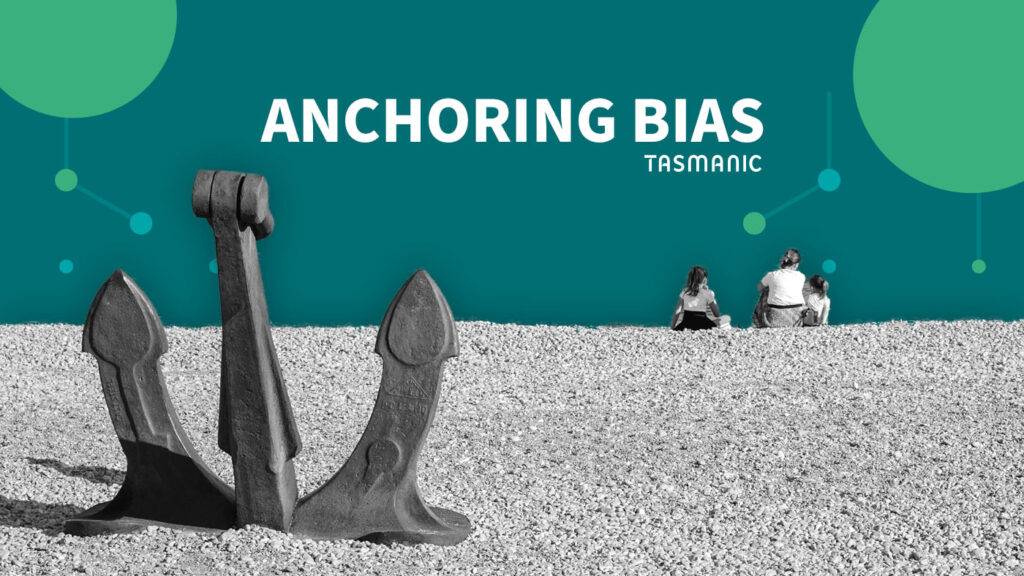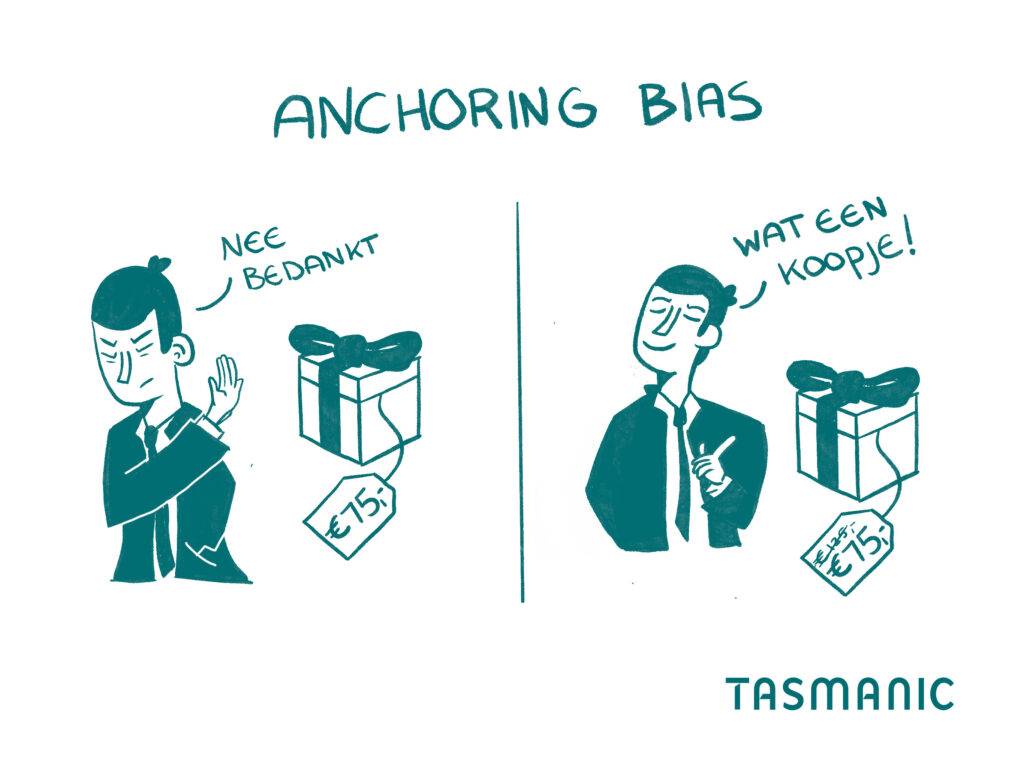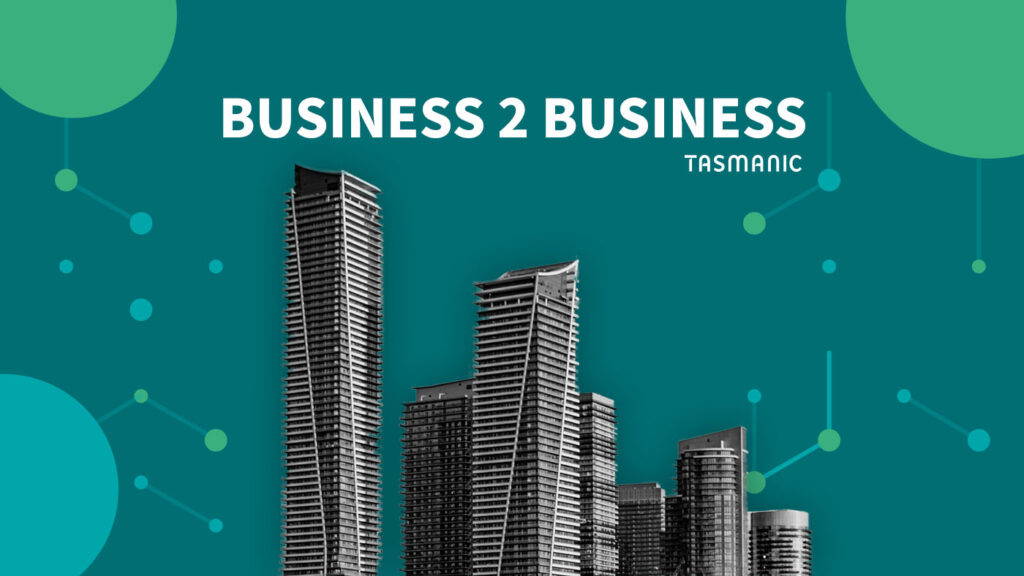
Last updated December 19, 2024
The powerful effect of the "anchoring bias" is a not to be underestimated bias that is automatically created in our brain. We explain how this effect influences customers in their buying behavior and how you can make use of it in your marketing and pricing strategies.
What is the anchoring bias?
Anchoring bias was first discussed in 1958 by researchers Sherif, Taub and Hovland. The anchoring bias (reference effect in Dutch) is a cognitive error in our brain in which we place too much value on the first piece of information we receive about a new subject. All subsequent information we receive is repeatedly compared to that very first piece of information, our handhold. We no longer view this information objectively, which can cause us to make incorrect judgments. This cognitive bias is like a systematic error or mental "short-cut" used to reach a decision quickly.
An example:
You may buy a Mother's Day gift for up to 25,-. In the store you come across a beautiful necklace for 75,-. Much more expensive than your budget, so you pass it up. Then when you see a beautiful bracelet for 35,- you suddenly find it "cheap," even though it is still above your budget. You buy it, because compared to 75,- 35,- is a bargain.
The effect of the anchoring bias is deeply rooted in our brain and even affects things for which it is not even relevant. The effect has been studied by psychologists for many years. The anchoring bias can be triggered by different mechanisms, depending on the circumstances. An anchoring bias can arise from values that come from within ourselves or from supplied information (external sources).

Anchoring bias from within ourselves: theanchor-and-adjust hypothesis
This hypothesis by Tversky and Kahneman (1974) asserts that when a person tries to make a reasoned estimate or prediction, he or she starts with a starting point (anchor) and gradually adjusts (adjust) it. This is because the initial value is often not estimated correctly, which would lead to incorrect decisions. Consider a difficult math problem. To guess the outcome within seconds, a piece of the sum is calculated and an adjustment is made to the final total based on this outcome.
Anchoring bias by external sources: the 'selective accessibility' hypothesis
This hypothesis is based on the widely represented "priming effect. The priming effect (Chartrand & Bargh, 1996) causes certain incoming information to evoke older information that the brain has already stored. These are often words and images we hear and see in our daily lives. Unconsciously, connections are made. However, these connections can be consciously influenced. For example, by using a positive, calming ad, customers will have less trouble waiting longer because the ad puts them in a good mood.
Priming is also used by recognizable brands to get customers to buy more. Companies can activate certain associations or past experiences in customers' memories to make them more receptive to the products or services the company wants to sell. This can have a major impact on potential customers' decision-making. Without being aware of it, they fall prey to companies' marketing techniques in this way. Just think of the associations you get with the brands Miele (There is no better) and Coca-Cola (atmospheric Christmas imagery).
Because the anchoring bias happens unconsciously, it is difficult to interrupt or prevent it. Even individuals seen as experts in their field are not immune to anchoring biases.
The anchoring bias and price perception
The anchoring bias is very interesting when setting prices for products or services. One technique you often see that is used deliberately is to ask for a high 'anchor' price and then discount the product, making the offer seem like a real bargain and increasing demand for the product. Think 'now 75% off' or 'from...for...'. By quoting the original price, an anchor is created. This suddenly makes the offer seem very attractive!
When quick purchase decisions need to be made about new concepts or objects, the anchoring bias also plays an important role. With goods we are not yet familiar with, our understanding and acceptance of prices is influenced (too much) by the anchoring bias. To form an opinion about the new price, we revert to a similar category and take those prices as our anchor. Thus, a previous experience determines whether we find a certain price acceptable, rather than the actual value of the product. Therefore, when marketing a new product, it is important to think about what category you are placing it in or what associations you are making.
Time is also an important factor here. When customers have more time to think, the anchoring bias is lower. Thus, with impulse purchases or offers that are only valid for a limited time, they are more likely to place high value on their anchor.
Here's how to apply the anchoring effect to your advantage
Some tips:
- Want to sell multiple products or services? Then start by naming the most expensive item or place it at the top of a web page. Each additional product after the "biggest" purchase seems like a bargain you can't pass up. It also improves your company's overall price perception. So think carefully about the order of presentation.
- Our mood affects our anchoring bias at the time (Furnham & Boo, 2011) and our purchase intention. In your communications, evoke a previous positive experience or association. People who are in a positive mood are more willing to engage or sponsor with you, for example.
- Create expectations that you can easily meet. If you mention a wait time of 30 minutes (the anchor) and it ends up being "only" a 20-minute wait, you will get fewer complaints than if you said 15 minutes and it becomes 20 minutes.
- Are you offering a solution to a problem? Then show the most extreme form of the problem or mention something that takes a lot more time and/or money, which can only make it seem easier to the customer and easy to solve with your product or service.
- Be aware that the first numbers or images you show during a sales pitch will stick as a frame of reference. Do you have a large selection, several years of experience or warranty? Put that number at the top of the page, making other vendors' offerings less than what appears to be "the norm. Especially when someone has little knowledge of what is a common offer.
Are the results from your online marketing disappointing?
Request our no-obligation performance scan and we'll tell you where you're going wrong.

















 Team
Team FAQ
FAQ Vacancies
Vacancies Contac
Contac AWR
AWR Ahrefs
Ahrefs Channable
Channable ContentKing
ContentKing Leadinfo
Leadinfo Optmyzr
Optmyzr Qooqie
Qooqie Hubspo
Hubspo Semrush
Semrush




